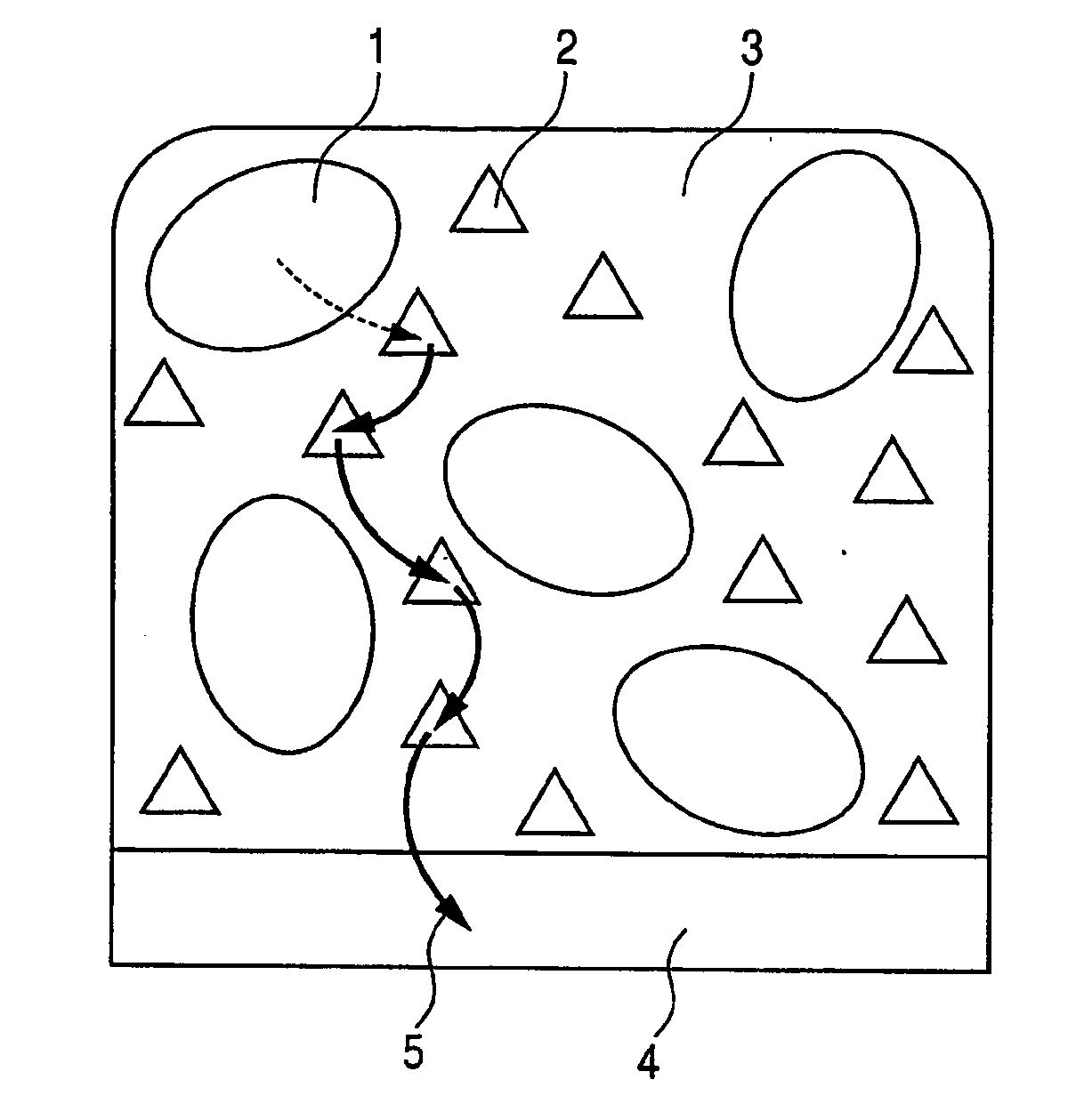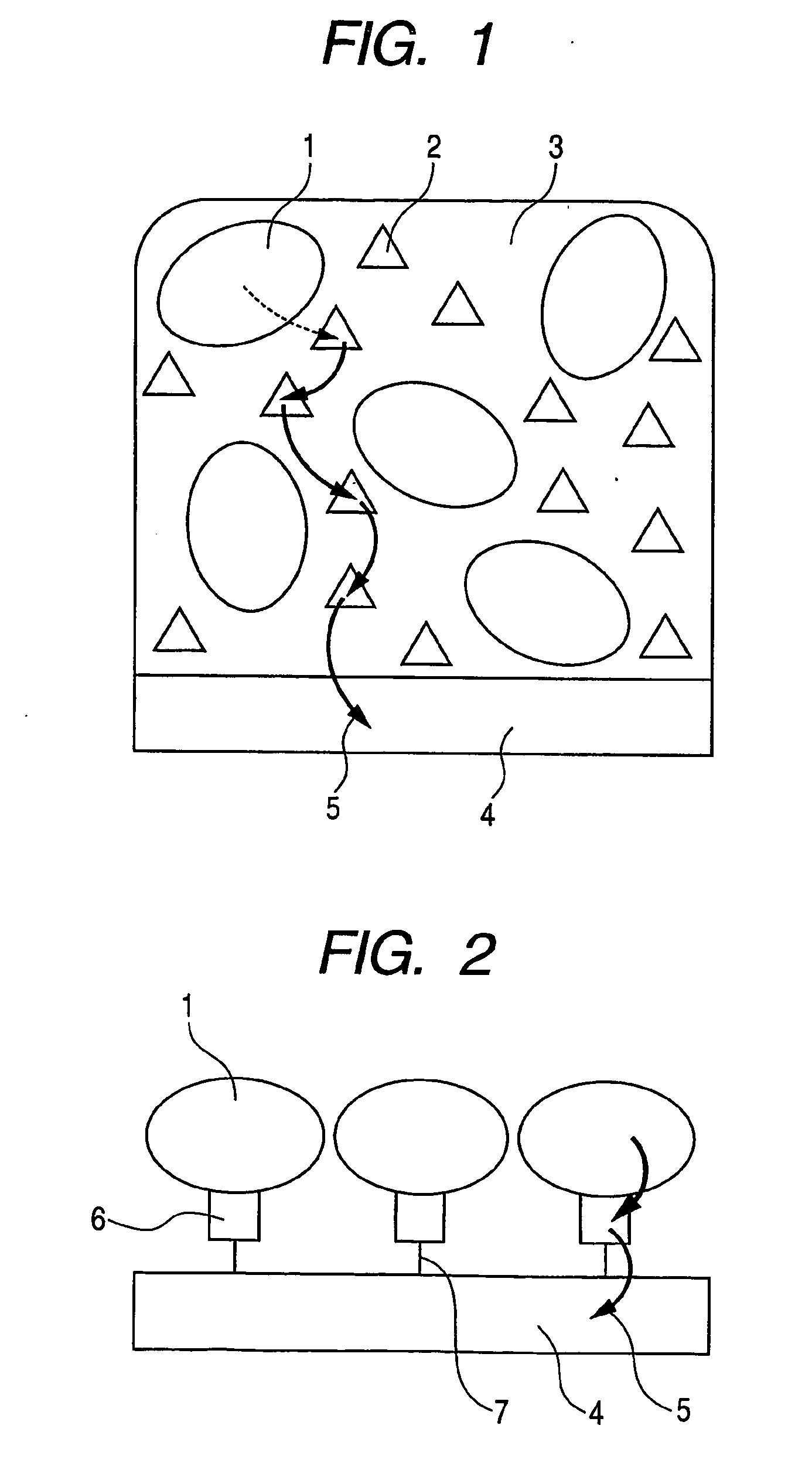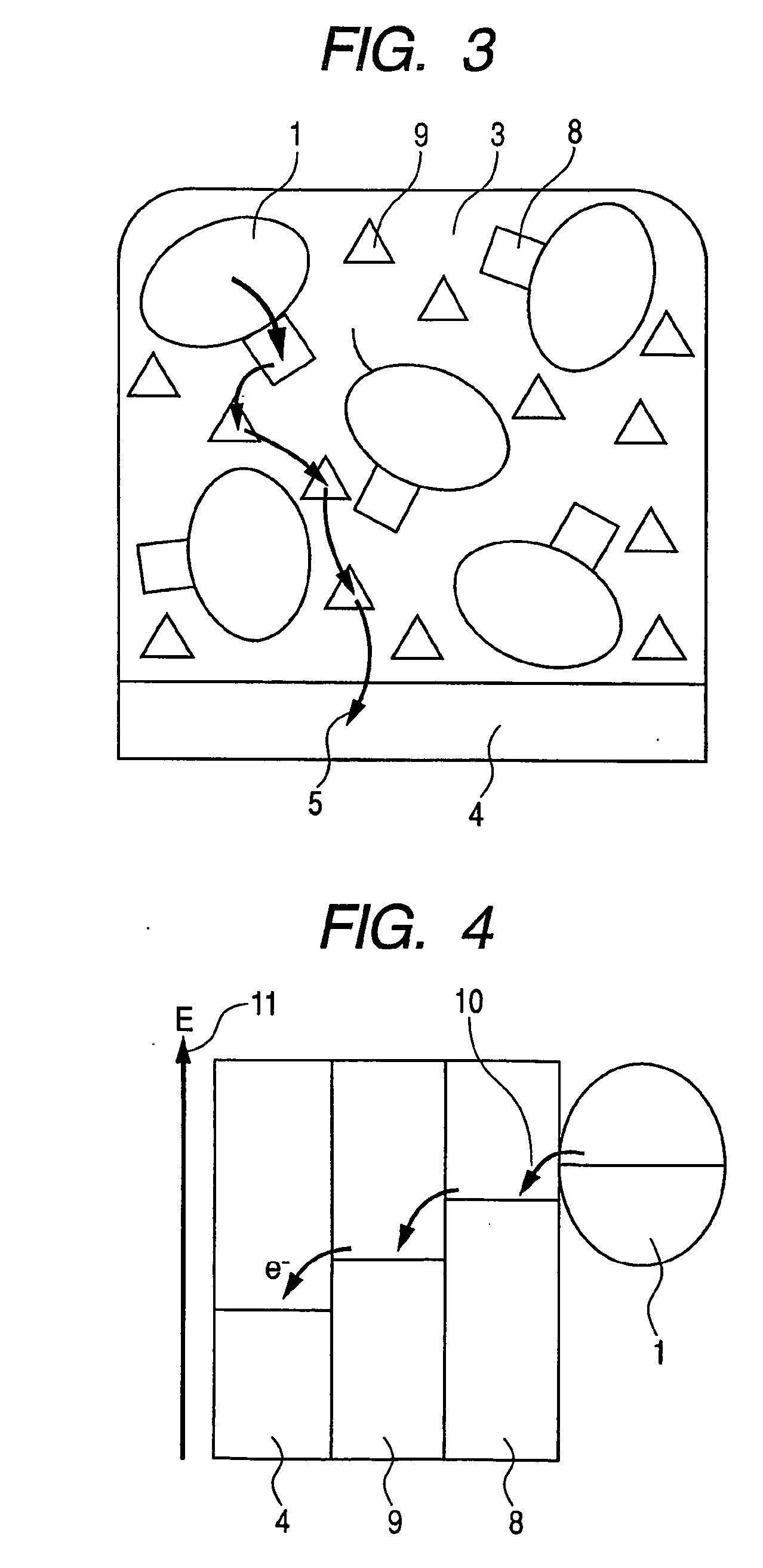Enzyme electrode sensor fuel cell and electrochemical reactor
a fuel cell and enzyme electrode technology, applied in the field of enzyme electrodes, can solve the problems of limiting the immobilization density of enzymes, increasing the electric and insufficient electron transfer velocity between enzymes and mediators, so as to improve the current density of enzyme electrodes and accelerate electron transfer to or from enzymes.
- Summary
- Abstract
- Description
- Claims
- Application Information
AI Technical Summary
Benefits of technology
Problems solved by technology
Method used
Image
Examples
preparation example 1
[0072] A commercial silica colloid dispersion liquid (Nissan Chemical Ind.; average particle size: 100 nm) is employed. The dispersion medium of the dispersion liquid is replaced by ethanol. A cleaned gold substrate (1 cm square, 0.3 mm thick, Nilaco) is allowed to stand in the dispersion liquid. The ethanol is allowed to evaporate at 30° C. to obtain a porous film constituted of silica spheres. This process is repeated several times to increase the thickness of a porous film constituted of silica spheres (100 nm thick). The film is heated at 200° C. for three hours, and then washed with ethanol. In a three-electrode cell, by use of this porous film as the working electrode, a platinum electrode as the counter electrode, and an Ag / AgCl electrode as the reference electrode, electrolytic polymerization is conducted in a solution of 0.1M 3,4-ethylenedioxythiophene and 0.1M lithium perchlorate in acetonitrile at a potential of 1.1 V (vs Ag / AgCl) by control with a potentiostat. The time ...
preparation example 2
[0073] Needle-shaped indium tin oxide (ITO, Sumitomo Metal Mining Co.; length: 30-100 nm; aspect ratio: 10 or higher) is dispersed in terpinol, and the viscosity is adjusted by addition of ethylcellulose to obtain an ITO paste. This ITO paste is applied on a cleaned gold substrate (1 cm square, 0.3 mm thick, Nilaco) by screen process printing, and is sintered at 450° C. for one hour to obtain a porous ITO sintered electrode (100 μm thick). Further thereon, ITO is deposited by plasma chemical vapor phase deposition (CVD) in a thickness of about 10 nm to obtain a conductive member constituted of ITO having numerous voids.
preparation example 3
[0074] Natural particulate graphite (particle size: 11 μm) is mixed with polyvinylidene fluoride in an amount of 10 wt % of the particulate graphite. N-methyl-2-pyrrolidone is added thereto to solve the polyvinylidene fluoride. The blended graphite paste is molded into a sheet of 11.3 mm diameter and 0.5 mm thick. The film is dried at 60° C., heated to 240° C., and further vacuum-dried at 200° C. Thereby a conductive member is obtained which is constituted of many graphite particles bonded together and has interconnected numerous voids in the structure.
PUM
| Property | Measurement | Unit |
|---|---|---|
| electric conductivity | aaaaa | aaaaa |
| electric conductivity | aaaaa | aaaaa |
| void size | aaaaa | aaaaa |
Abstract
Description
Claims
Application Information
 Login to View More
Login to View More - R&D
- Intellectual Property
- Life Sciences
- Materials
- Tech Scout
- Unparalleled Data Quality
- Higher Quality Content
- 60% Fewer Hallucinations
Browse by: Latest US Patents, China's latest patents, Technical Efficacy Thesaurus, Application Domain, Technology Topic, Popular Technical Reports.
© 2025 PatSnap. All rights reserved.Legal|Privacy policy|Modern Slavery Act Transparency Statement|Sitemap|About US| Contact US: help@patsnap.com



